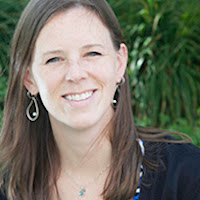Posted by Melissa Horwitz, Google for Education Team Editor's note: If you’re in the Austin area today for SXSWedu, come visit the Google Fiber Space (201 Colorado Street) to attend a range of sessions on innovation in the classroom throughout the day. See the full schedule of sessions at the Google Fiber Space. Can't make it? Don't fret, all presentations will be added to the schedule after the event.What’s the secret to inspiring the next generation of innovators? Today SXSWedu in Austin, Texas, we’ll hear thoughts about this topic from a host of speakers, including Monica Martinez, regional director at
EdTechTeam, and a panel of
Google Science Fair student winners.
While inspiration comes in many forms, it’s clear that technology, along with support from teachers, parents and advisors, is key to motivating students to make a difference in their communities and beyond. Here’s an overview of what these inspiring speakers will be sharing.
Empowering a culture of technology and mentorship“Everything I’ve done in my career involves using technology to become more efficient,” says Monica Martinez. “I want to inspire educators and teachers to do the same, to solve problems and create workflows that would otherwise be cumbersome.” As regional director at EdTechTeam, her goal is to help educators embrace tools, such as
Google Apps for Education, to better manage their work.
Martinez has been passionate about technology since childhood, when she started using her uncle’s computer for school projects and to teach herself how design. She built a career in design and educational technology — the two topics that have inspired her SXSWedu
session about creating the ultimate workflow for educators with Google Apps.
“Teachers often are concerned that they don’t have enough time in the day to get everything done,” Martinez says. This problem is compounded when teachers feel ill-equipped to use new technology. Martinez leads workshops to show teachers how easy-to-use technology can help with their daily tasks.
Beyond the efficiency benefits, technology helps to create a culture of empowerment. When educators model new technology, they can inspire students to do more with the tools at their disposal.
“Telling students to think critically, experiment with new things and collaborate is fine, but if they don’t see their teachers, mentors and advisors doing the same, the message isn’t as strong and sometimes lost,” says Martinez.
Topic: Efficient workflows with Google Apps
Presenter: Monica Martinez, Regional Director, EdTechTeam
When: Tuesday, March 8th, 2016, 12:30 - 1:00 pm
Inspiring the next generation of creators Kavita, Elif, Naomi and Deepika are young inventors who will be speaking about how to motivate future innovators, explorers and pioneers. Aside from being
Google Science Fair finalists and winners, these four young people have something else in common: supportive and dedicated mentors.
“Many teenagers are sitting at home all over the world with big ideas and questions, but they don’t know how to get started making a difference. Teachers, parents and mentors in their communities can play a powerful role by supporting these students,” explains Andrea Cohan, program lead for the Google Science Fair.
Students that participate in the Google Science Fair are able to explore and interact with science, engineering and their communities — global and local — in a way that enriches the typical classroom experience.
From finding sustainable alternatives for manufacturing and water purification to improving air quality, the students on this panel have no shortage of world-changing ideas. For example, Elif, who is from Istanbul, Turkey, found a way to use banana peels to produce bio-plastic as a replacement for traditional petroleum-based plastic in her project,
Going Bananas.
SXSWedu attendees are in a position to positively impact students’ lives. “You can help them find the resources they need to get started, discuss their ideas with them and simply be a supportive sounding board. Every student on this panel attributes part of their success to the mentors, like you, in their lives,” Cohan says.
Topic: #Howcanwe inspire the next generation of innovators, explorers and pioneers? Moderator: Stephan Turnipseed, Executive Vice President and Chief Strategy Officer, Destination Imagination
Panelists: Google Science Fair winners Kavita Selva, 2013 Google Science Fair finalist Elif Bilgin, 2013 Google Science Fair Science in Action winner Naomi Shah, 2011 Google Science Fair winner, ages 15-16 Deepika Kurup, 2015 Google Science Fair National Geographic Explorer Award winner
When: Tuesday, March 8th, 2016, 1:15 - 2:00 pm
To hear from these speakers
and more, join us for these sessions at the
Google Fiber Space. If you can’t make it in person, follow #GoogleEdu to stay up to date and check the event page where we'll post the presentations. We also encourage all students ages 13-18 (from anywhere in the world!) to participate in the
2016 Google Science Fair, which is open for submissions until May 17.














